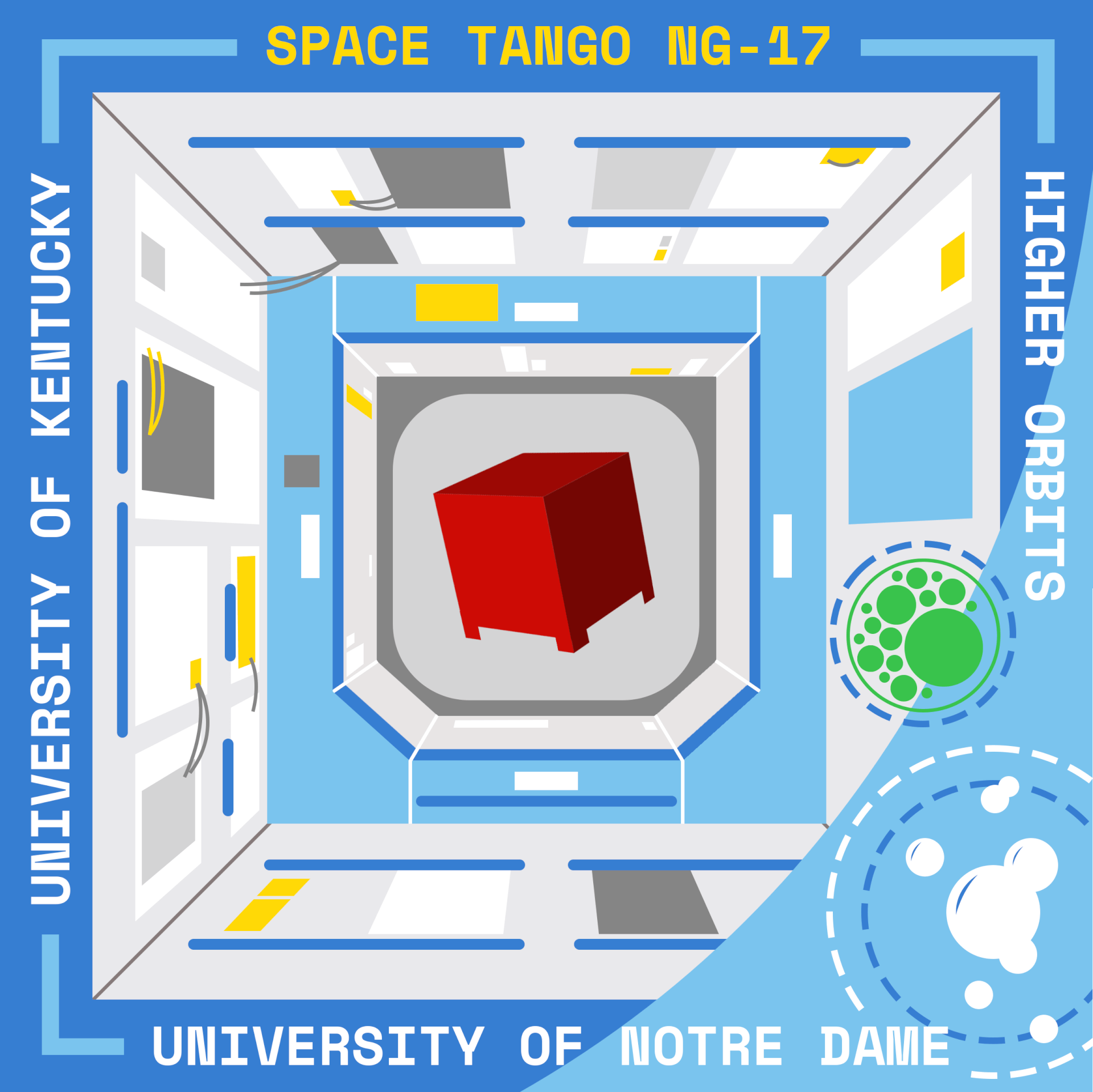
We use cookies to ensure that we give you the best experience on our website. If you continue to use this site we will assume that you are happy with it.
Ok ✕

Cubelab Satellite Demonstrator aims to validate a new attitude control technology for small satellites, which is an integral part of future space missions. Conventional attitude control systems for large satellites are not suited for small satellites. The new technology is energy-efficient, lightweight, and not subject to friction wear and could enhance the attitude maneuvering capabilities of small satellites.
Unique to Space Tango’s previous partner investigations, the CubeLab Satellite Demonstrator investigation will be deployed in the aisle of the International Space Station for testing and demonstration. Consisting of two CubeLabs at 1.5U, 50% larger than Space Tango’s typical 1U CubeLab, both of the Satellite Demonstrator CubeLabs are released by a crew member to test different algorithms that show the effectiveness of this technique. During deployment, both CubeLabs run through their protocols and perform measurements of their angular acceleration while filmed by a crew member. Once deployment is complete, the CubeLabs are installed back into the TangoLab for data download and refinement of the algorithms for the next deployment. Four total deployments are planned, each lasting approximately 10 minutes.
The Optical Imaging of Bubble Dynamics on Nanostructured Surfaces investigation observes thermal bubbles in a microgravity environment with the use of Space Tango’s automated optical imaging system.
Thermal bubbles are essential for boiling and new applications have been found in fields like bio-sensing.
in cancer screening. Bubbles generated from the boiling process detach from the surface due to competition between factors including surface tension, capillarity, and buoyancy. The results from this study are expected to help understand the fundamentals of multi-phase fluid physics and provide important guidance on the strategies to manipulate bubble dynamics via nanostructured surfaces. Investigation findings may impact the optimization of thermal bubble-enabled bio-sensing technologies, which is promising to advance human health in space and on Earth.
Why microgravity?
A thermal bubble can create the so-called Marangoni flow to bring biomarkers and nano-probes in the sample suspension to the bubble, which then deposits them onto the surface to form a concentrated spot for the detection of low concentration analytes. The control of such a process depends on the detailed understanding of surface thermal bubble dynamics, including its generation, growth, and detachment. Such phenomena are influenced by the competition between surface tension, capillarity, and buoyancy. Decoupling these factors is not possible on Earth under gravity, rendering the microgravity environment in the International Space Station (ISS) a unique platform to eliminate the influence of buoyancy, so researchers can focus on the impact of surface tension and capillarity on bubble dynamics.
This student investigation was designed by Team Lotus members Iyshwary Vigneswaran Warren, Iynthury Vigneswaran Warren, and Shikha Patel, who were selected as the winner of the Higher Orbits Go For Launch! Tallahassee Florida Space Day event. Learn more about their winning investigation below:
The Effects of Microgravity on Oxygen Output Regarding Chlorella vulgaris (Oxygen Production in Algae) investigation studies the effect of the microgravity environment on the oxygen output of the algal species Chlorella vulgaris.
This science, technology, engineering, and math (STEM) payload is developed from a winning proposal submitted by a team of students as part of the Higher Orbits Go for Launch competition. The payload monitors the dissolved oxygen content of growth media in an algal culture as it grows in the microgravity environment over a 25(+) day period. Images of the culture vessel are used to monitor the investigation’s progression.
Why microgravity?
Team Lotus hypothesize the rate of oxygen production in the algal cultures of Chlorella vulgaris will be greater in the microgravity environment as compared to their terrestrial counterparts. This data helps to provide a better understanding of the effects of microgravity on basic biological processes, such as photosynthesis, as well as its effects on the development of common photosynthetic organisms, such as the algae species Chlorella vulgaris. Results could also contribute to the design of life support systems for future human space exploration. Algae also have the potential for use in the development of biofuels and biochemical energy in space, helping to address environmental concerns and scarcity of resources on future exploration missions.